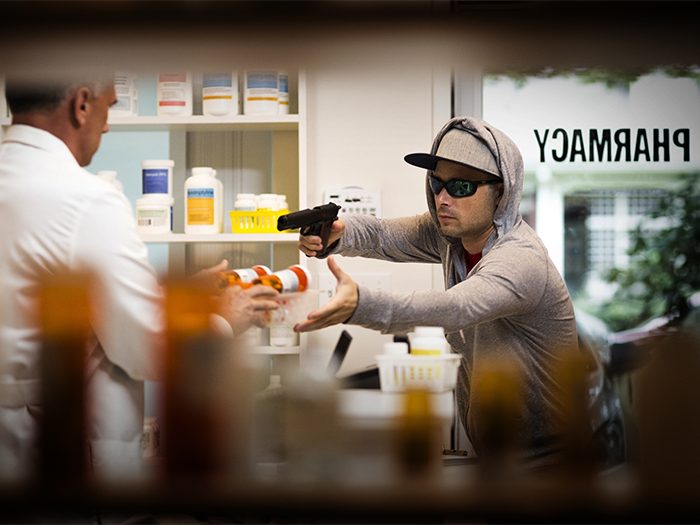Workplace Violence
Workplace Gun Deaths Becoming More Commonplace

A convenience-store worker escaped physical harm when a robber pointed a gun at him, only to die 15 months later when the gunman returned — intent on preventing the worker’s court testimony.
As the worker walked to a parking lot behind the Southern California 7-Eleven where he worked, a dark SUV with an unobstructed view of the store followed. The 23-year-old employee was shot to death near his car.
It is unclear whether the robber or the robber’s girlfriend pulled the trigger. Evidence indicates both were present during the murder.
What is clear, experts said, is that despite attention to high-profile mass shootings, like the one at Marjory Stoneman Douglas High School that sparked recent anti-gun violence protests, most workplace-related homicides stem from domestic violence, following the victims to their job, suicides or robbery-related incidences like the 7-Eleven worker’s murder.
“While we get the big spectacular media coverage from shootings and mass attacks, historically that has not been the leading cause of death for shootings, but actually it’s the accidental deaths,” said Frank Figliuzzi, a former FBI assistant director and chief operating officer who consults on workplace violence at ETS Risk Management.
In general, accidental shootings, including those at home, while hunting or at work, account for the highest number of gun deaths, Figliuzzi said. If you are going to carry a weapon to protect your home or workplace, train in gun safety, he advised.
“While we are talking about the topic of risk and guns and robbery, don’t forget — gun safety is an issue. And accidental deaths, whether at home or place of work, are a real concern,” Figliuzzi said.
Overall, the latest data available shows a spike in workplace homicides. They increased by 83 cases to 500 in 2016, the highest homicide total since 2010, according to the U.S. Bureau of Labor Statistics. Suicides increased by 62, to a total of 291, during the same year.
The most likely form of workplace violence occurs when a stranger, such as a robber, walks into a business, Figliuzzi said. “So it’s not always employee against employee.”
That squares with 2012 research findings from NCCI Holdings Inc. Back then, NCCI found that despite news headlines reporting workplace homicides as crimes of passion committed by coworkers, most workplace murders resulted from robberies.
NCCI, a workers’ comp research and rating organization, has not updated its research on the topic, a spokesman said.
A 2016 NIOSH blog posting also states that robbery related homicides are the leading cause of death for retail workers. Among them, convenience store workers suffer from homicides at a rate that is seven times greater than for workers in other industries.
Convenience store workers suffer from homicides at a rate that is seven times greater than for workers in other industries.
The death of Roshan Bhandari, the Southern California 7-Eleven convenience-store worker killed walking to his car, was ultimately related to a robbery.
In 2012, his parents sued the individual 7-Eleven and the franchise Bhandari worked for, claiming negligence for failing to provide a security guard at the store where their son worked.
They argued the employer knew the store and surrounding area experienced high crime, including multiple store robberies, and was therefore negligent in failing to provide proper security.
The defendants countered they did not have a duty giving rise to negligence, because Bhandari’s murder was not “foreseeable” nor “preventable” — key pieces of California’s legal requirements for finding a duty to prevent third-party criminal acts.
The court found that past robberies at the store were not similar to murder and store supervisors did not know Bhandari would be a murder target. The court also noted the homicide occurred in an alley behind the store and not on 7-Eleven premises. The court granted the defendants summary judgment.
Earlier this year, California’s Second Appellate District agreed the trial court’s ruling favoring the defendants was appropriate. In its finding, the appeals court rejected a plaintiff argument that the employer was also negligent because the employer lacked workers’ compensation insurance.
“Plaintiffs’ failure to plead this theory in their complaint, or to otherwise raise it in the trial court, means we will not consider it now,” the appeals court stated in its Rajendra Bahadur Bhandari v. 7-Eleven opinion.
An attorney representing Bhandari’s parents did not return a telephone call.
However, David B. Shapiro, an attorney at Lewis Brisbois who represents the defendants, said the plaintiffs have requested that California’s Supreme Court hear their appeal.
Court records, meanwhile, show the robber implicated in Bhandari’s death received a 15-year prison sentence for the armed robbery, despite Bhandari’s inability to testify because of his death. Records could not be found for any murder prosecution. &











